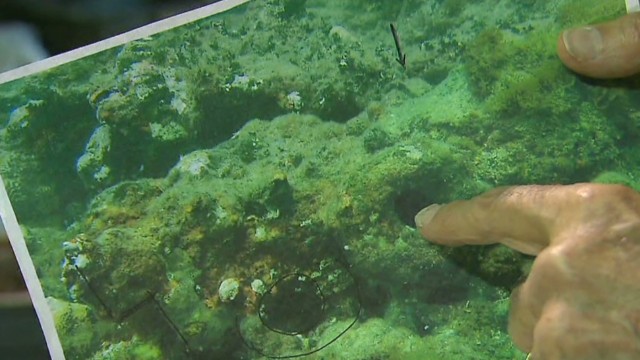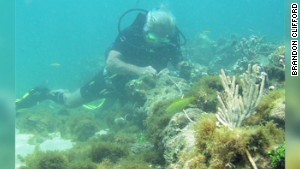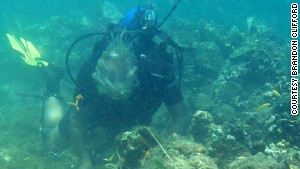500-year-old mystery: Wreck off Haiti may be Columbus' flagship Santa Maria

Is Columbus' Santa Maria ship found? 02:43
Story highlights
- "We don't know what secrets are going to be held on the ship," says explorer
- Barry Clifford says the wreck is in the right place and is the right size
- A cannon of 15th century design found at the site is the "smoking gun," he says
- Evidence is "very compelling," says an archaeological expert
Is a sunken shipwreck off Haiti the long-lost remains of the Santa Maria, Christopher Columbus' flagship from his first voyage to the Americas?
Underwater explorer Barry Clifford, who led a team that found and investigated the wreck, says he's confident it is.
"Every single piece fits. Now, of course, we have to go through the whole archeological process, and we plan to do that within the next few months, but I feel very confident that we've discovered the site," he told CNN.
"This is the ship that changed the course of human history," Clifford said.
Photos: History's biggest mysteries 12 photos
If the claim is confirmed, it would go down as one of the most significant underwater archaeological discoveries ever.

Could sunken wreck be Columbus' ship? 01:40
"It is the Mount Everest of shipwrecks for me," said Clifford, 68.

Sunken ship may be Columbus'02:03

2013: 1913 shipwreck found in lake01:36
But it isn't a new find for him. Clifford's announcement involves a wreck he and his team investigated in 2003. A cannon was found as part of the wreck. But, Clifford told CNN, archaeologists at the time "misdiagnosed" the cannon.
Two years ago, after having researched the type of cannon used in Columbus' time, "I woke up in the middle of the night and said, 'Oh my God,' " Clifford told CNN. He realized the 2003 find might have been the one.
A couple of weeks ago, he returned to the wreck with a group of experts. The team measured and photographed the ship. But some items, including the cannon, had been looted from the ship in the intervening years, Clifford said.
The ship "still has attributes that warrant an excavation to determine the site's identity," archaeologist Charles Beeker of Indiana University said Tuesday. "Barry may have finally discovered the 1492 Santa Maria."
The evidence, Beeker said, is "very compelling."
The ship was found in the exact area where Columbus said the Santa Maria ran aground more than 500 years ago, Clifford said. The wreck is stuck on a reef off Haiti's northern coast, 10 to 15 feet beneath the water's surface.
Clifford plans to go back to Haiti next month to meet with authorities and decide what steps to take next.
Wrecked in 1492
It was the flagship of Columbus' small fleet that set sail from Spain in August 1492 under the sponsorship of King Ferdinand II and Queen Isabella I.
The voyage aimed to find a westward route to China, India and the gold and spice islands of the East. But the land the sailors set eyes on in October 1492 was an island in the Caribbean.
Among the islands on which Columbus set foot was Hispaniola, which is divided between Haiti and the Dominican Republic. Columbus established a fort in Haiti.
That December, the Santa Maria accidentally ran aground off the island's coast. Some planks and provisions from the wrecked ship, which was about 117 feet (36 meters) long, were used by the garrison at the fort, according to Encyclopaedia Britannica.
Columbus set off back to Spain with the two remaining ships, the Nina and the Pinta, in January 1493.
Archaeological study needed
Archaeologists will have to excavate and examine the ship found off Haiti in order to determine whether it is, in fact, the Santa Maria.
Most of the ship is in shape and will be possible to excavate with the help of the Haitian government, said Clifford, who made a name for himself salvaging pirate ships off the coasts of Cape Cod and Madagascar.
His team has used sophisticated metal detectors and sonar scans to study the remains.
The ship is the right size, he said, and stones found at the site match the kind from the part of Spain where the ship was built.
"I don't think any of us should take for granted what has been written," Clifford said. "This is a tremendous touchstone to that period in time. We don't know what secrets are going to be held on the ship."

No comments:
Post a Comment